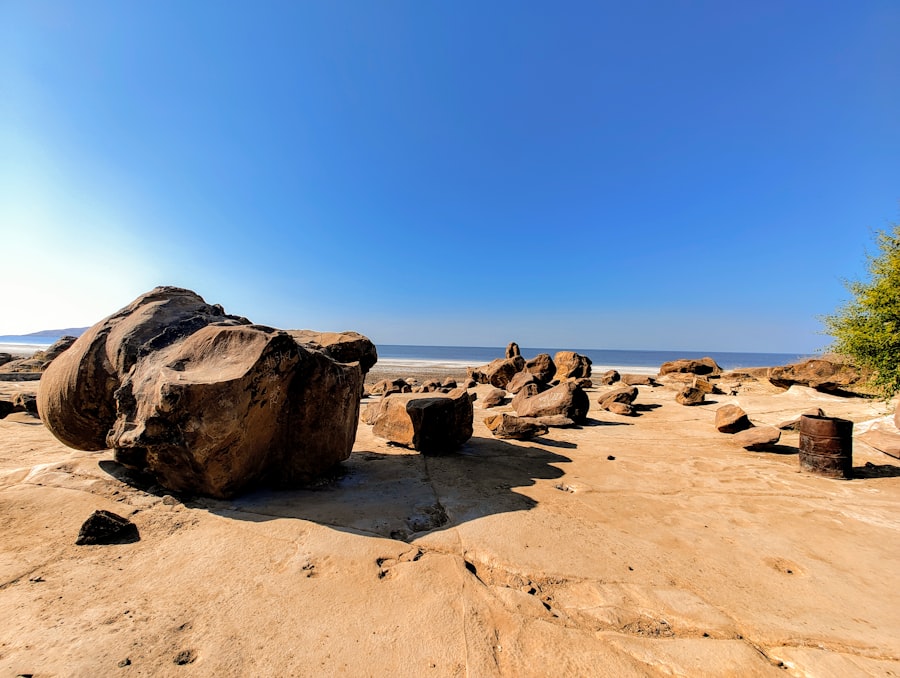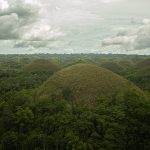Download links
How to install The Mysterious Chocolate Hills: A Natural Wonder APK?
1. Tap the downloaded The Mysterious Chocolate Hills: A Natural Wonder APK file.
2. Touch install.
3. Follow the steps on the screen.
Description
Nestled in the heart of Bohol, Philippines, the Chocolate Hills stand as one of the most iconic natural wonders of the world. This unique geological formation consists of over 1,200 symmetrical hills that rise dramatically from the surrounding landscape, creating a breathtaking panorama that captivates visitors from around the globe. The hills are particularly famous for their striking appearance during the dry season when the grass covering them turns a rich brown hue, resembling mounds of chocolate—hence their name.
This enchanting sight has made the Chocolate Hills a symbol of Bohol and a must-visit destination for tourists seeking both natural beauty and adventure. The allure of the Chocolate Hills extends beyond their visual appeal; they are steeped in mystery and intrigue. Local legends and folklore have woven a rich tapestry of stories around these hills, adding to their charm and significance.
As visitors explore this remarkable landscape, they are often drawn not only to its stunning vistas but also to the cultural narratives that have emerged over centuries. The Chocolate Hills are not merely a geological phenomenon; they represent a confluence of nature, culture, and history that continues to inspire awe and curiosity.
Key Takeaways
- The Chocolate Hills are a unique geological formation located in the Bohol province of the Philippines, consisting of over 1,200 cone-shaped hills.
- The formation of the Chocolate Hills is believed to be the result of limestone weathering and erosion over millions of years, creating their distinct shape and appearance.
- The Chocolate Hills are home to a diverse range of flora and fauna, including various species of plants, birds, and mammals, making it an important ecological site.
- The Chocolate Hills hold significant cultural and folklore importance to the local community, with legends and stories surrounding their origin and existence.
- Efforts are being made to promote sustainable tourism and conservation of the Chocolate Hills, balancing the need for economic development with environmental preservation.
Formation and Geology of the Chocolate Hills
The formation of the Chocolate Hills is a subject of scientific interest and debate, with various theories attempting to explain their unique structure. The prevailing geological explanation suggests that these hills were formed through a combination of limestone erosion and weathering processes over millions of years. The region is primarily composed of limestone, which is susceptible to erosion by rainwater.
Over time, this erosion has sculpted the landscape into the conical shapes that characterize the Chocolate Hills today. The hills vary in height, with some reaching up to 120 meters, creating a dramatic topography that is both visually striking and geologically significant. In addition to limestone erosion, tectonic activity has played a crucial role in shaping the Chocolate Hills.
The region has experienced various geological forces that have uplifted the limestone formations, contributing to the hills’ current elevation and arrangement. The interplay between erosion and tectonic movements has resulted in a landscape that is not only aesthetically pleasing but also rich in geological history. Researchers continue to study these processes to gain a deeper understanding of how such formations develop and evolve over time, making the Chocolate Hills a fascinating subject for geologists and nature enthusiasts alike.
Flora and Fauna of the Chocolate Hills

The ecological diversity surrounding the Chocolate Hills is as remarkable as their geological features. The area is home to a variety of plant species that thrive in the unique environment created by the hills’ limestone composition. Grasses dominate the landscape, particularly during the dry season when they turn brown, enhancing the chocolate-like appearance of the hills.
However, during the rainy season, vibrant green vegetation flourishes, transforming the hills into a lush paradise. This seasonal variation not only adds to the visual appeal but also supports a diverse range of wildlife. The fauna inhabiting the Chocolate Hills includes several endemic species that contribute to the region’s biodiversity.
The Philippine tarsier, one of the world’s smallest primates, is particularly noteworthy; it can be found in nearby forests and is often associated with Bohol’s natural attractions. Additionally, numerous bird species, such as the Philippine eagle and various migratory birds, can be spotted in the area, making it a haven for birdwatchers.
The ecological richness of the Chocolate Hills underscores the importance of preserving this unique environment for future generations.
Cultural and Folklore Significance of the Chocolate Hills
| Aspect | Metric |
|---|---|
| Number of Hills | 1,268 |
| Legend | Associated with a folklore about two giants throwing rocks at each other |
| Cultural Importance | Considered a national geological monument and a popular tourist attraction |
| Local Beliefs | Believed to be the tears of a giant who lost his love |
The Chocolate Hills are not only a natural wonder but also a significant cultural landmark for the people of Bohol. Local folklore is rich with tales that explain the origins of these hills, often involving mythical creatures and epic battles. One popular legend tells of two giants who engaged in a fierce rivalry, throwing boulders at each other until they eventually grew tired and left behind the mounds that became known as the Chocolate Hills.
Such stories reflect the deep connection between the local community and their natural surroundings, illustrating how cultural narratives can shape perceptions of landscapes. Moreover, the Chocolate Hills have become an integral part of Boholano identity. They are featured prominently in local art, literature, and festivals, serving as a source of pride for residents.
The hills are often depicted in paintings and crafts sold by local artisans, showcasing their significance as both a natural and cultural symbol. Festivals celebrating Bohol’s heritage frequently incorporate elements inspired by the hills, further embedding them into the cultural fabric of the region. This intertwining of nature and culture highlights how landscapes can influence local traditions and community identity.
Tourism and Conservation Efforts for the Chocolate Hills
Tourism plays a vital role in the economy of Bohol, with the Chocolate Hills serving as one of its primary attractions. Visitors flock to this stunning site to take in panoramic views from designated viewing platforms or embark on guided tours that explore the surrounding areas. The influx of tourists has led to increased investment in infrastructure and services aimed at enhancing visitor experiences while ensuring that environmental impacts are minimized.
Local businesses have flourished as a result, providing opportunities for residents to engage with visitors through guided tours, local cuisine, and handicrafts. However, with increased tourism comes the responsibility of conservation efforts to protect this unique landscape from degradation. Various initiatives have been implemented to ensure sustainable tourism practices are followed.
These include establishing guidelines for visitor behavior, promoting eco-friendly activities, and engaging local communities in conservation efforts. Educational programs aimed at raising awareness about the ecological significance of the Chocolate Hills have also been introduced, encouraging visitors to appreciate and respect this natural wonder. By balancing tourism with conservation, stakeholders aim to preserve the integrity of the Chocolate Hills for future generations while allowing people to experience their beauty.
The Future of the Chocolate Hills: Challenges and Opportunities

As we look toward the future of the Chocolate Hills, several challenges and opportunities emerge that will shape their preservation and significance. One major challenge is climate change, which poses threats to ecosystems worldwide. Changes in weather patterns can affect vegetation growth around the hills, potentially altering their iconic appearance and impacting local wildlife habitats.
Additionally, increased rainfall could lead to soil erosion or landslides in vulnerable areas, necessitating proactive measures to mitigate these risks. On the other hand, there are opportunities for sustainable development that can benefit both local communities and conservation efforts. By promoting eco-tourism initiatives that prioritize environmental stewardship, stakeholders can create economic incentives for preserving natural resources while providing visitors with meaningful experiences.
Collaborations between government agencies, non-profit organizations, and local communities can foster innovative approaches to conservation that leverage technology and education to protect this unique landscape. In conclusion, while challenges lie ahead for the Chocolate Hills, there is also immense potential for growth and sustainability. By embracing responsible tourism practices and fostering community engagement in conservation efforts, it is possible to ensure that this extraordinary natural wonder continues to inspire awe for generations to come.
The future of the Chocolate Hills will depend on our collective commitment to preserving their beauty while celebrating their cultural significance within Bohol’s rich heritage.
If you’re interested in learning more about unique geological formations like the Chocolate Hills in the Philippines, you may want to check out this article on outlook.science. This website offers a variety of scientific articles and information on natural wonders around the world, making it a great resource for those fascinated by the Earth’s diverse landscapes.
FAQs
What are the Chocolate Hills?
The Chocolate Hills are a geological formation located in the Bohol province of the Philippines. They are made up of around 1,200 to 1,776 conical limestone hills, which are covered in green grass that turns brown during the dry season, giving them a chocolate-like appearance.
How were the Chocolate Hills formed?
The exact formation process of the Chocolate Hills is still a subject of debate among geologists. However, it is widely believed that they are the result of the uplift of coral deposits and the action of rainwater and erosion over millions of years.
What is the significance of the Chocolate Hills?
The Chocolate Hills are a major tourist attraction in the Philippines and are considered a natural wonder. They have been declared the country’s third National Geological Monument and are currently on the list to be included in the UNESCO World Heritage List.
Can visitors explore the Chocolate Hills?
Yes, visitors can explore the Chocolate Hills by climbing to the top of some of the hills, where they can enjoy panoramic views of the surrounding countryside. There are also viewing decks and platforms for tourists to take in the beauty of the hills.
Are there any legends or myths associated with the Chocolate Hills?
According to local folklore, the Chocolate Hills were formed from the tears of a giant named Arogo, who wept over the death of his beloved. Another legend tells of two feuding giants who hurled rocks, boulders, and sand at each other, which eventually formed the hills.




